We seem to have fallen into a pattern lately where we stick fairly close to home during the week and then on Saturday go on a grand adventure. Recently Tim started calling it “Adventure Saturday.” Since he coined the term, I feel it is my duty as chief planner to make sure no Adventure Saturday is left adventure-less. This past Saturday was no exception. Originally we planned to drive from Bottomless Lakes to Santa Fe. But where’s the adventure in that? Instead, we made a detour and turned a boring day of driving into a two-part overnight adventure. First up was the tiny town of Capitan, NM for a visit to the Smokey Bear Historical Park.
For some reason I’ve always had a fondness for this handsome bear. I’m not sure if my fascination is born out of nostalgia since I have distinct memories of seeing his iconic signs while camping as a kid. Or maybe I just really have a thing for shirtless bears in jeans and ranger hat?
The historical park contains a museum with all kinds of Smokey Bear memorabilia, an extensive display on forest fires, and a two acre garden. We started the tour with a short video that told the story of Smokey’s life. Here’s a quick overview: In 1950 during a wildfire near Capitan, NM a group of firefighters from Texas discovered a tiny black bear cub with badly burned paws hiding in a tree. They rescued the bear, who was briefly named Hotfoot Teddy, and New Mexico game warden Ray Bell took over his care. Smokey lived with Ray and his family in Santa Fe while, with the help of a local vet, they nursed him back to health. The story was quickly picked up by the national news and the bear cub became a celebrity. He was soon named Smokey after the bear on the fire prevention posters, and a living symbol for fire prevention was born. Eventually Smokey was flown to the National Zoo in Washington DC where he lived to be 26 years old. Upon his death in 1976, Smokey’s remains were returned to Capitan and he was buried at the historical park.
The campaign to prevent forest fires (called the Cooperative Forest Fires Prevention Program) was born in 1942. At first they printed war posters carrying fire prevention messages such as, “Careless Matches Aid the Axis” and “Our Carelessness, their Secret Weapon”. As well as simple messages like, “Use the Ash Tray” and “Put Your Pipe Ashes in Bare Earth.”
A few years later they switched gears and decided to use an animal to deliver the fire prevention message. After using Bambi for a year, they settled on a bear. He was called Smokey after a well known fire-chief named Smokey Joe Martin. The very first Smokey the Bear poster came out in 1944. In 1947 a new artist took over the Smokey posters and coined the famous term, “Only You Can Prevent Forest Fires.” It wasn’t until 1950 though, when a real bear became the spokesperson (spokesbear?) for fire prevention that the public really began to pay attention to the message. Smokey the Bear became a wildly popular figure, and his fame has funded a wide array of fire prevention education programs. Including the Junior Ranger Program which began as an effort to get kids to help Smokey prevent fires, and today is a major educational tool used by most national parks. Many people today don’t realize that Smokey was a real bear. But the folks of Capitan, New Mexico know better. They continue to honer his legacy with anniversary celebrations and the wonderful historical park that is a fitting tribute to this special bear.
After absorbing everything we could about a bear named Smokey we continued on for the second half of Adventure Saturday. Our next stop was a BLM recreation area and campground called the Valley of Fires. This recreation area is adjacent to a 125 square mile lava field called the Malpais Lava Flow. That’s right…lava! New Mexico continues to surprise us with its geographical wonders. The Malpais Lava flow is believed to be the youngest lava flow in the continental US, with the most recent flow occurring only 1,500 to 2,000 years ago. The lava spewed from volcanic vents and flowed south along the Tularosa Basin for 44 miles. Occasionally the lava surrounded areas of higher ground forming islands among the lava called kipukas. The campground lies on one of the larger kipukas.
The campground is really nice, basic BLM park with 19 sites all offering up views of the lava flow. Many of the sites have electric and water hookups, and on the afternoon when we arrived all of the other campers were clustered together in these sites. Even though it was in the mid-80s, we decided not to spend the extra six bucks for an electric hook-up and found a gigantic, private site far from everyone else.
The recreation area has a really nice paved nature trail with informative signs. You are welcome to make your own path through the lava, but it was pretty rugged with lots of holes and cracks, so we decided to stick to the trail. We waited until just before sunset to walk the path and I think it was probably the right decision. Not only was it cooler, but the low position of the sun really highlighted all the details in the lava.
Along the way we encountered pressure ridges, collapsed bubbles, lava tubes, and a surprising variety of plants.
Our favorite was the ropy-looking lava called Pahoehoe.
I hoped for a spectacular sunset to end to the day, but it wasn’t to be. By the time we got back to the Airstream the sun had sunk below the horizon leaving behind just a faint pinkish glow in the darkening sky.
All in all not a bad end to another adventure-filled Adventure Saturday.

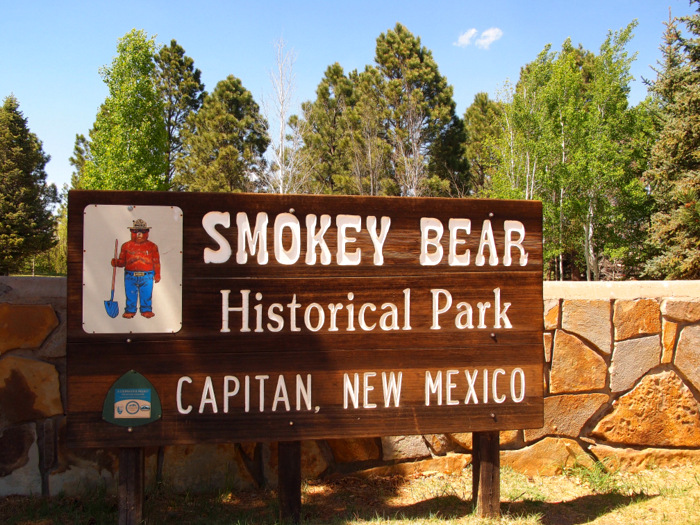
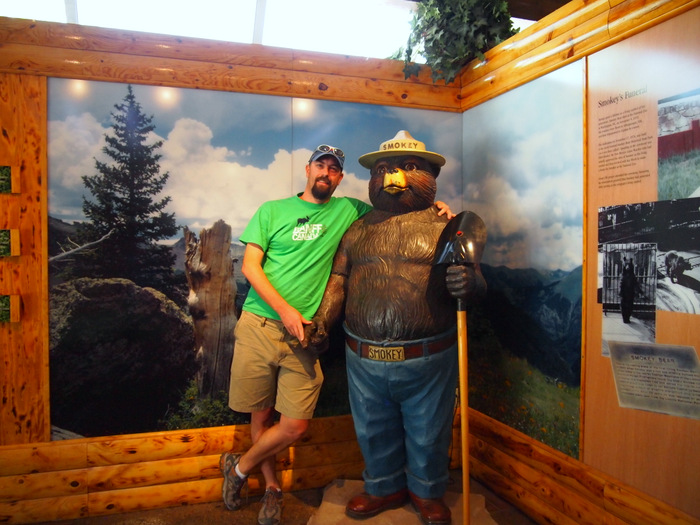
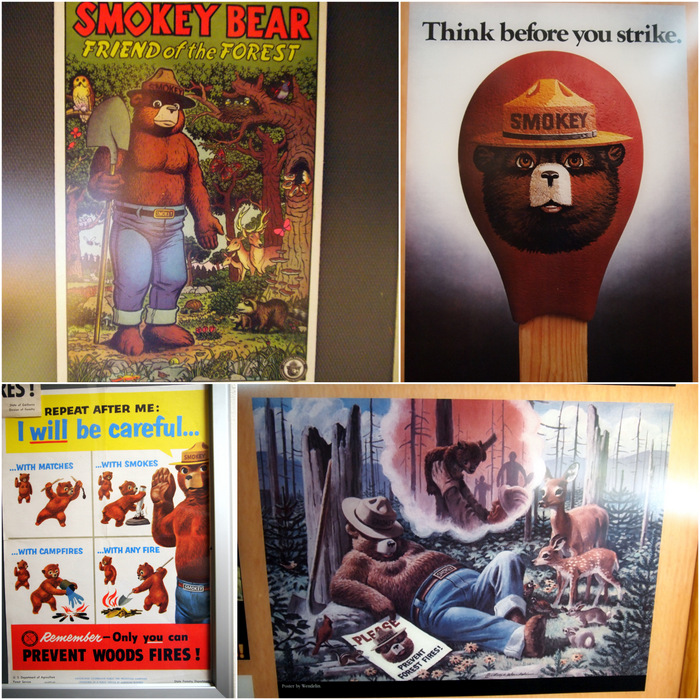
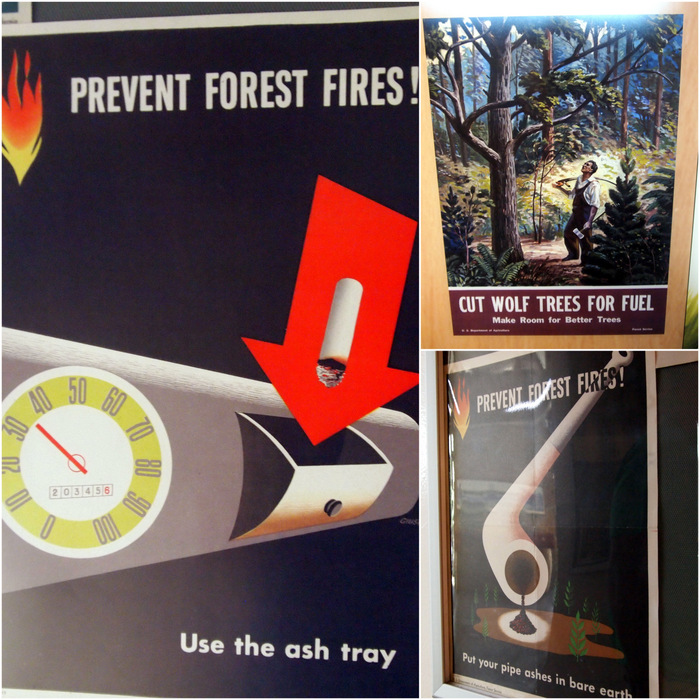
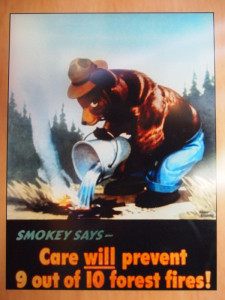
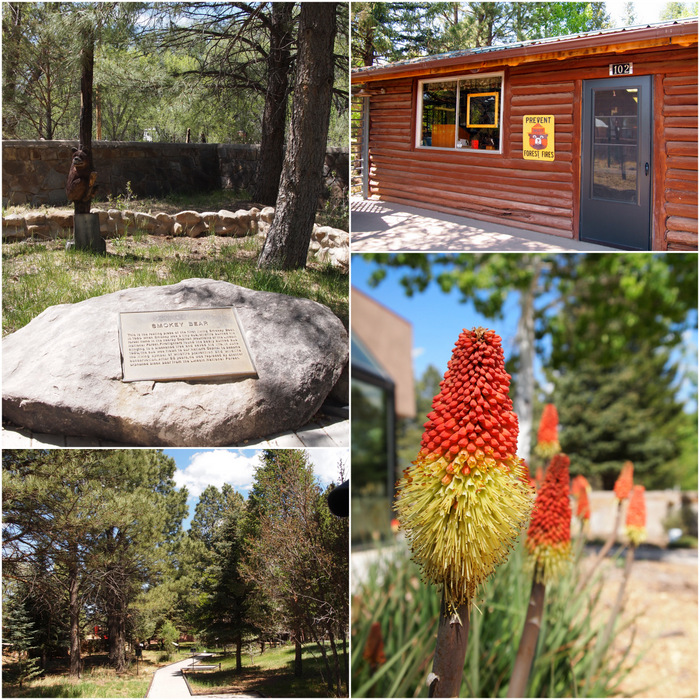
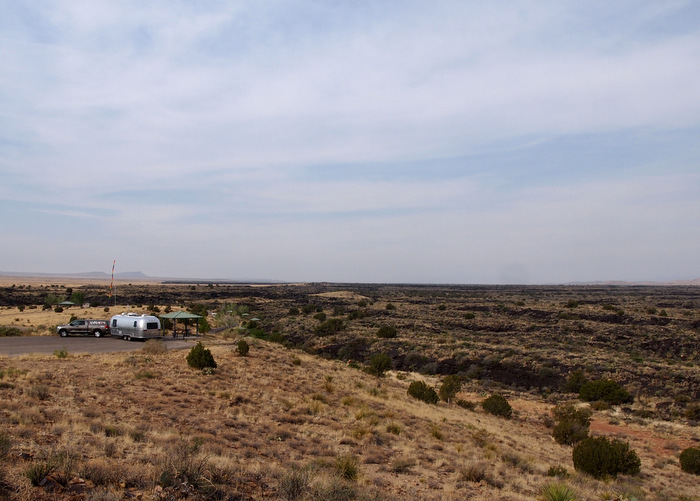
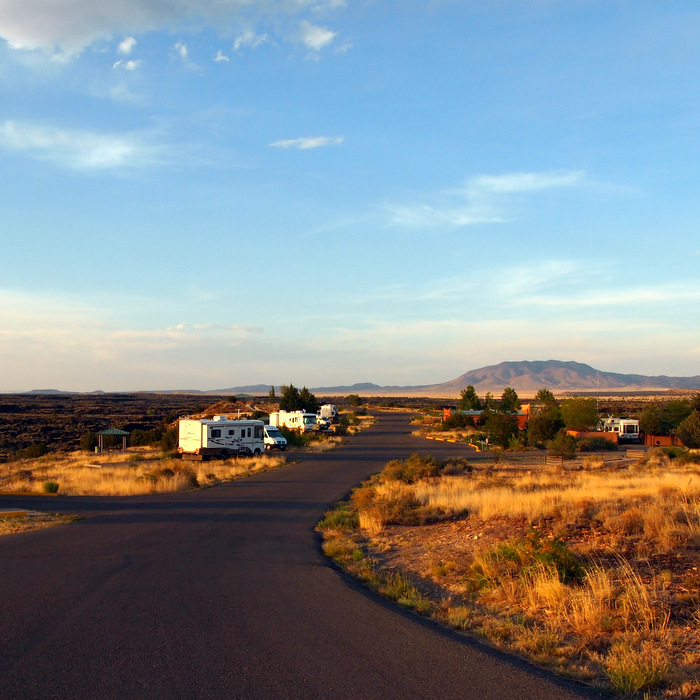
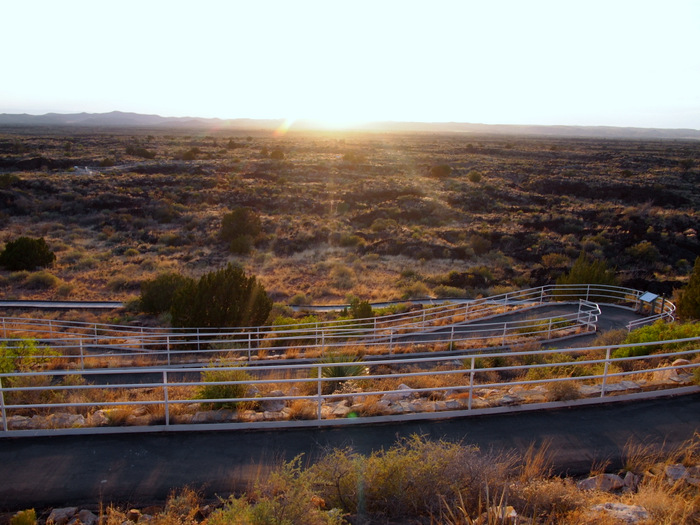
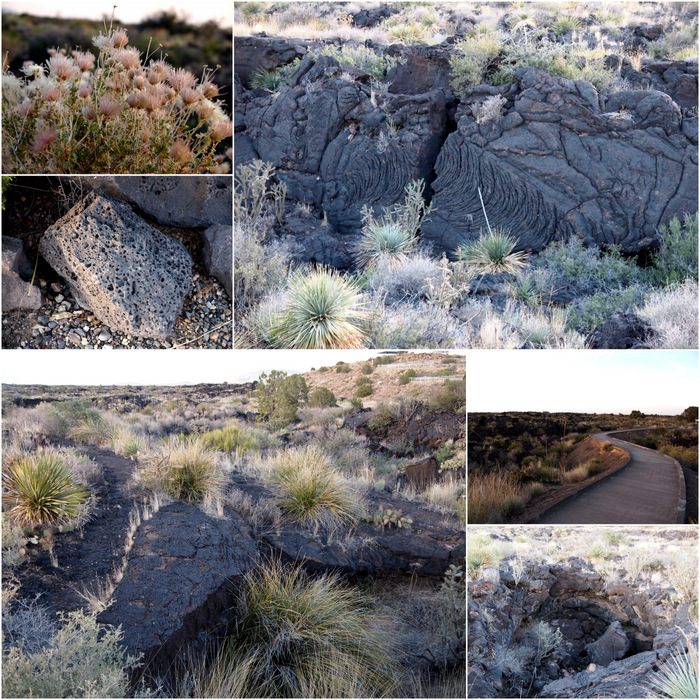
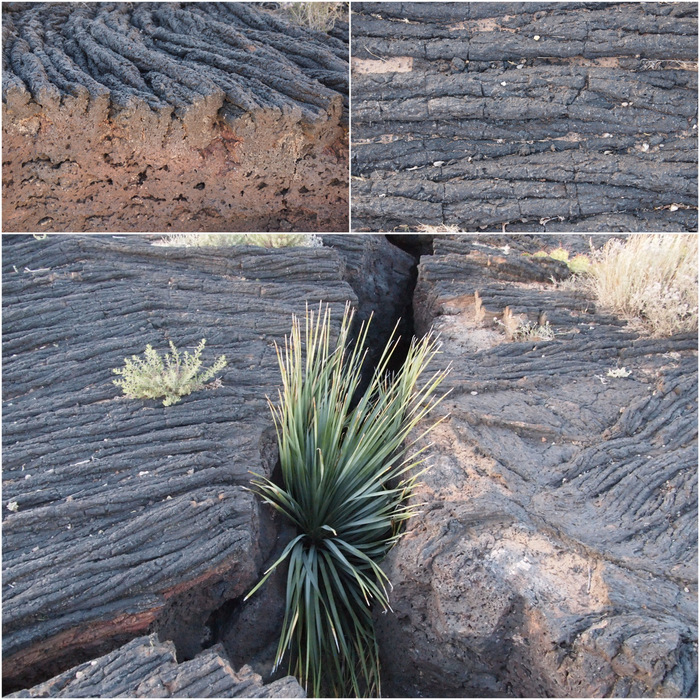
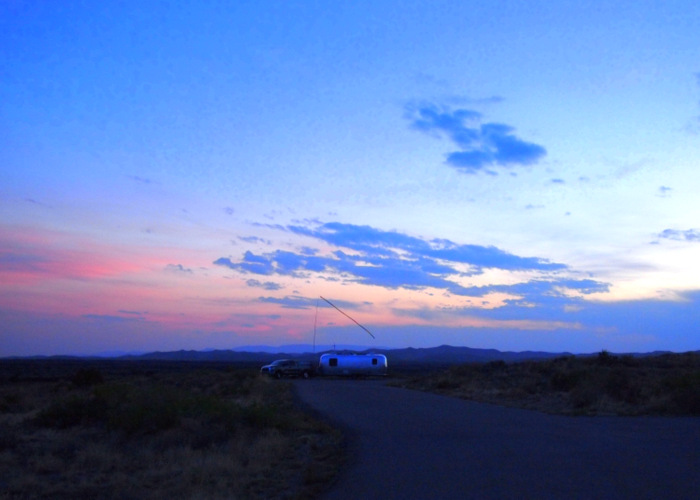
2 comments
Very pretty picture of the campground. NM really is the land of enchantment.
We went to the Smokey Bear Historical Park too – love Smokey! The Malpais Lava Flow looks really interesting, especially Pahoehoe. Love New Mexico.
Brenda